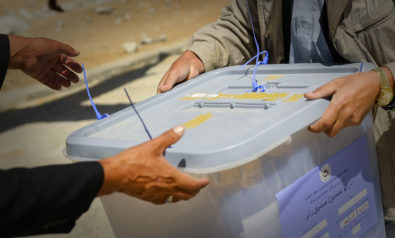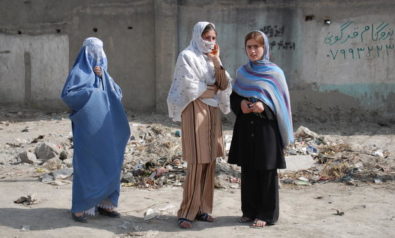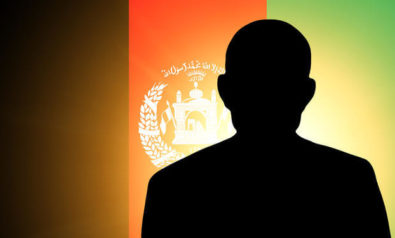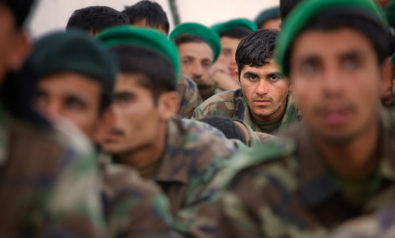As Karzai leaves office, Afghanistan remains unstable following a decade of missed opportunities for peace.
Much to his credit, and the powers in Washington, Hamid Karzai has survived his presidential terms. However, it has come at the expense of leaving behind a controversial legacy. When the time comes for the Afghan president to step down, the world will examine his actions and unravel the many flaws of a tenure that included corruption and appeasement of warlords. But more scrutiny will be placed on his ability to reach peace, an area marred by failure courtesy of the Taliban. After 13 years since the Taliban fell, their resurgence and resilience has proved to be the making of an indisputable nemesis for Karzai and NATO.
The Afghan president may have a long list of mistakes on his record, but if anything has proved to be his undoing, then it was a war with no end. After years of rhetoric about a new Afghanistan, it was almost inevitable that in the face of increasing violence since 2006, Karzai would finally have to accept that defeating the Taliban and its cohorts was no easy task. Faced with a rising tide of insurgent violence in his penultimate years, negotiating with the Taliban was the only solution for peace, which has failed miserably.
However, this came at the cost of not only reneging on his words to crush the Taliban. It also created disillusionment among those who fear the prospect of the Taliban coming back to power. What will define Karzai’s career is not that he failed to make peace, but rather his naivety in believing he would see the back of the Taliban.
The Fall and the Rise of Taliban
The initial fall of the Taliban regime in 2001 was the beginning of the false dawn. To assume that enigmatic Mullah Mohammed Omar and his gun-toting Islamist warriors had cowered into their safe havens in Pakistan, never to reemerge, was a naive attempt to convince the anti-war movement that the War on Terror was a noble work in progress. Evidence suggests that far from being pushed into submission, the Taliban and al-Qaeda proved to be the very equivalent of what the Soviet Union found in the mujahedeen: a war-hardened group of individuals who refused to accept failure and negotiate with a foreign occupier.
If there was a particular time that highlighted the complex task of defeating the Taliban, the moment came in 2006, a year that saw a 200% rise in insurgent attacks in comparison to the first five months of the war. In 2009, the Obama administration announced a surge of 30,000 soldiers and a redoubling of civilian officials after winding down in Iraq. The presence of extra US troops was hardly a useful deterrent as the following years saw increased attacks.
Why would the Taliban make peace with a man who is at the end of his tenure? Considering that Abdullah Abdullah and Ashraf Ghani Ahmadzai, the two presidential runoff candidates, have pledged to sign the BSA, it seems almost irrelevant to deal with Karzai.
In 2013, the United Nations Assistance Mission in Afghanistan documented at least 8,615 civilian casualties — 74% of which were attributed to the Taliban and their allies. Despite pledging to abjure attacks on civilians, the insurgents have focused on targeted killings of government employees, officials, pro-government tribal and community leaders, election staff, health workers and clerics. In fact, hundreds have been killed in “targeted” attacks as well caught in crossfire between insurgents and the Afghan National Security Forces.
The Taliban continue to hold some support, with the Asia Foundation suggesting that almost a third of Afghanistan’s population backs the group. Support for the Taliban has been largely kept afloat by a shadowy judicial system that operates under the Taliban brand in rural areas of Afghanistan to compensate for a vacuum in central justice. However, it would be wrong to assume that Afghans are enticed by the Taliban due to an ideological alignment. Rather the biggest motivation has come from the US invasion, inept government institutions and militia-like police forces that intimidate civilians.
Afghanistan-Pakistan Relations
Meanwhile, neighboring Pakistan has been a key factor in the Taliban’s resurgence. Under three separate administrations throughout the war, Pakistan has failed to break up an extensive network of militias that use the country’s semi-autonomous tribal regions as a launch pad for guerrilla warfare against NATO, US soldiers and Indian troops in Kashmir. However, according to Karzai and the White House, Pakistan has willingly allowed the Taliban and other surrogate groups to nest in the country’s tribal regions.
In 2011, Karzai said: “Pakistan has pursued a double game toward Afghanistan, using terrorism as a means to continue.” His chiding of Pakistan was met with approval by those who accuse Islamabad’s security establishment of supporting the Taliban to counter India’s influence in Kabul. The Inter-Services Intelligence (ISI) is seen as the main benefactor of the Taliban. The ISI has been accused of acting with complete autonomy from Islamabad. Not only has it protected Mullah Omar and the Taliban since 2001, it has also been attacked for providing refuge to Hizb-i-Islami militants and Jalaluddin Haqqani, who later went on to redevelop the Haqqani network — all of which have contributed to the insurgency.
The Pakistani governments of Gen. Pervez Musharaff, Asif Zardari and Nawaz Sharif have all denied such allegations. But mounting evidence from US and NATO intelligence suggests a pervasive and systematic ISI collusion, one in which they provided the Taliban with training camps, artillery, medical care, army vehicles for transport to the border and various other social service institutions.
In 2006, the chairman of the Joint Chiefs of Staff, Admiral Mullen, and the deputy director of the CIA, Stephen Kappes, visited Islamabad to show Gen. Ashfaq Parvez Kayani and Pakistani politicians the evidence of ISI complicity. Musharaff and Kayani both stated that “elements of the ISI may be out of control” — a contradiction of a statement made by Musharaff claiming that the ISI was “not actively involved with the Taliban.” Further information revealed by Taliban commanders indicate the ISI had influence over Mullah Omar’s circle when it came to operations and tactics as well dictating matters on leadership, suggesting the ISI had almost complete control of the Taliban.
Despite the documentation of such evidence, the ISI’s collusion with the Taliban seems to show no respite. In 2010, Talat Masood, a retired Pakistani general and a leading expert on the military, claimed the ISI has maintained its traditional links with the Taliban. Rangin Spanta, a former national security advisor to Karzai, has also stated that Pakistani influence is still huge in Afghanistan, reiterating that whenever they wanted to reach out to the Haqqani network, it was only possible to do so via the ISI. Spanta went on to repeat the mantra that the ISI was supporting pro-Taliban militants, claiming: “The Haqqani network and the ISI are one and the same. It is a group managed and trained by the ISI.”
According to Saudi intelligence, Pakistan’s tacit support can be explained for two simple reasons. First, Islamabad is increasingly concerned over the growing influence of Iran and India in Afghanistan. Second, Pakistan has pledged support for the Taliban and other sub-groups, if they recognized the Durand Line. The first issue is of far greater concern to the government, in what it sees as an attempt by arch-enemies to encircle Pakistan.
Making Peace With the Taliban
The ISI’s deep affiliation with the Taliban and its allies will no doubt leave a sour taste in Karzai’s mouth. However, Pakistan’s collusion matters very little when taking into account the Afghan president’s rash attempts to make peace with the Taliban.
For years, the Taliban have refused to enter peace talks with the Afghan government, declaring them “puppets” of the US. But ironically, Taliban commanders have been involved in peace talks with the Americans, which have failed on each occasion. Using the US to enter peace talks with the Taliban was the only available channel for Karzai. However, he may have shot himself in the foot by insisting that Washington back out of negotiations that were due to take place in Qatar in 2013, while at the same time denouncing the Taliban for further attacks on civilians.
An attempt for trilateral peace talks was stopped and what followed thereon put a severe strain on Afghan-US relations. In an attempt to draw the Taliban to the table with only the Afghan government, Karzai has sought to appease the commanders by distancing himself from the US. “Distancing,” however, may be an understatement. After postponing negotiations for a Bilateral Security Agreement (BSA), Karzai accused US soldiers of killing innocent civilians and demanded the release of Afghan prisoners. The president has certainly not enjoyed the most amicable relationship with Washington.
However, the risk of incurring the anger of the Obama administration has not borne fruit in peace talks with the Taliban. Although Aimal Faizi, Karzai’s spokesman, said in February that “the last two months have been positive,” talks have failed to reach anything worthwhile. That said, it is no surprise as to why peace talks have stalled. Why would the Taliban make peace with a man who is at the end of his tenure? Considering that Abdullah Abdullah and Ashraf Ghani Ahmadzai, the two presidential runoff candidates, have pledged to sign the BSA, it seems almost irrelevant to deal with Karzai.
Afghanistan After Karzai
It is difficult to predict which path peace talks will take once Karzai’s successor is elected. With Abdullah as the favorite to win the June 14 runoff, it is wishful thinking to say that his pledge to sign the BSA will not push the Taliban away from the table. There has been nothing to suggest that the Taliban will speak to either of the candidates. Considering that militants have attacked Ghani’s home and Abdullah’s armed convoy during the election campaigns, it will take time for the new president to build trust with the Taliban.
If there are any lessons to be learned, then it is the necessity to balance interests of the Taliban and the US. While the Taliban abhor the presence of the Americans and have refused to negotiate if soldiers are still on the ground, Afghanistan will need the troops as an insurance policy during peace talks. Karzai’s biggest mistake was his refusal to include the US. Any negotiations without Washington opens the door for the Taliban to step back into power.
Considering suspicions remain over the ISI’s involvement with the Taliban, a friendlier approach with Pakistan could have saved the ailing relationship and may calmed any noises in Islamabad over the hegemonic threat of India. Strengthening relations between Afghanistan and Pakistan may prove to be the last thing the Taliban would want.
It sounds easier said than done, but this is the only option left. The alternatives are either to cave in to Taliban demands or to continue an unwinnable fight till the death, which would lead to many more years of instability in Afghanistan.
Karzai has made genuine efforts to compromise. However, he has failed to leave a positive and lasting legacy due to lost opportunities that have tainted his time in office. The new president must learn from his predecessor’s mistakes and protect Afghanistan from spiraling down into years of uncertainty.
The views expressed in this article are the author’s own and do not necessarily reflect Fair Observer’s editorial policy.
Support Fair Observer
We rely on your support for our independence, diversity and quality.
For more than 10 years, Fair Observer has been free, fair and independent. No billionaire owns us, no advertisers control us. We are a reader-supported nonprofit. Unlike many other publications, we keep our content free for readers regardless of where they live or whether they can afford to pay. We have no paywalls and no ads.
In the post-truth era of fake news, echo chambers and filter bubbles, we publish a plurality of perspectives from around the world. Anyone can publish with us, but everyone goes through a rigorous editorial process. So, you get fact-checked, well-reasoned content instead of noise.
We publish 2,500+ voices from 90+ countries. We also conduct education and training programs
on subjects ranging from digital media and journalism to writing and critical thinking. This
doesn’t come cheap. Servers, editors, trainers and web developers cost
money.
Please consider supporting us on a regular basis as a recurring donor or a
sustaining member.
Will you support FO’s journalism?
We rely on your support for our independence, diversity and quality.












Comment